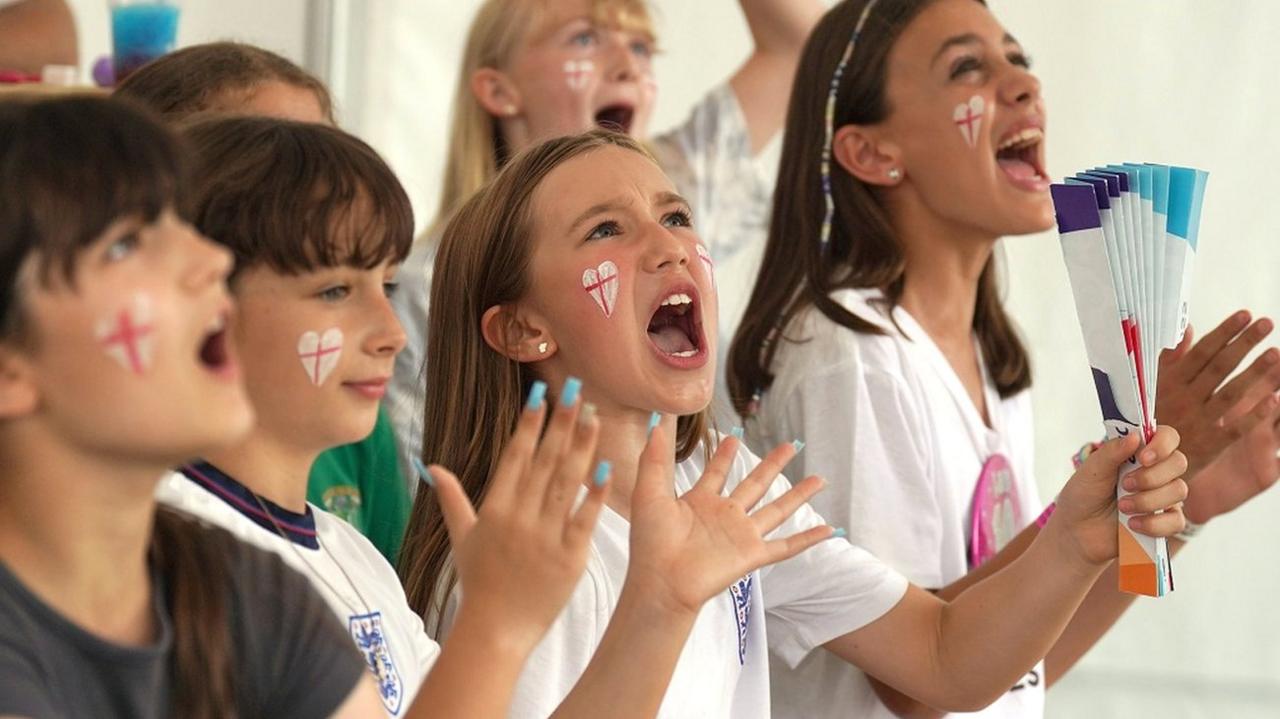'I've seen it all as first female sports photographer'
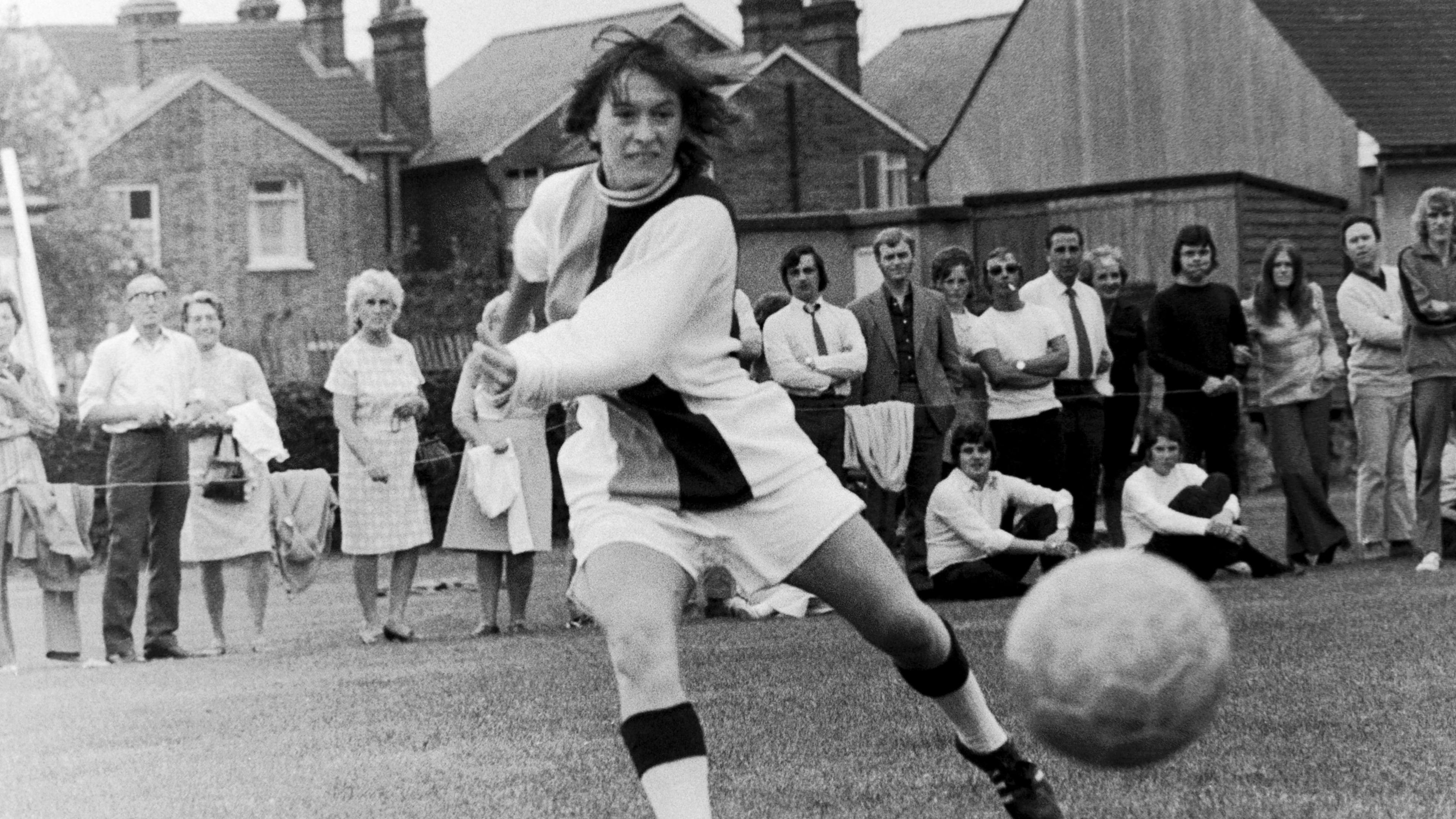
The Crystal Palace Ladies players in the 1970s had primitive facilities for both teams and fans
- Published
“What you got in your handbag love, is that your knitting? Shouldn’t you be in the kitchen?”.
Those were among the insults Hy Money recalls when she first entered a 1970s press room at Crystal Palace's Selhurst Park ground.
“One chap walked up and deliberately barged into me,” she remembers. “‘Oh, sorry Sir I didn’t see you there,’ he said, trying to make his point.”
While the football club quickly embraced her as one of their own, Ms Money still faced significant barriers.
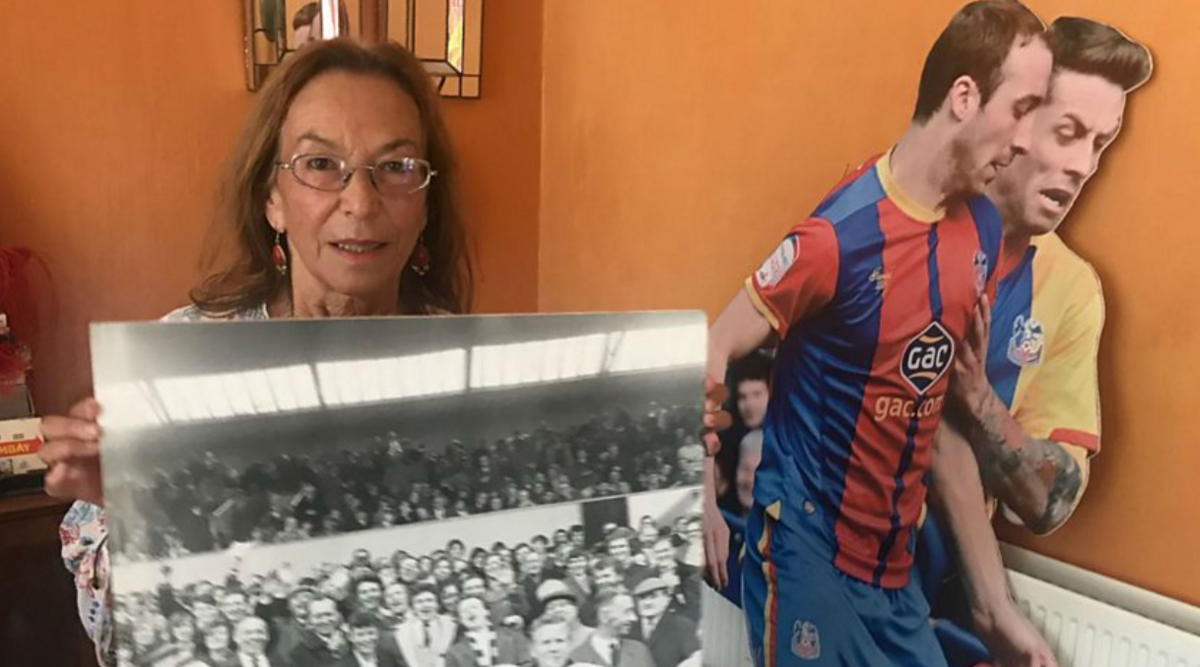
Hy Money has spent decades pitch side capturing Palace's big moments
Her initial application for a National Union of Journalists (NUJ) pass was also denied due to a petition signed by 40 men.
Ms Money’s refusal to accept these setbacks led her to become the country’s first accredited female sports photographer.
Born in Bangalore, India, Ms Money moved to the UK at 19 with a camera in hand.
“My mum sent me to England and told me to take a photo of the Queen,” she says. “I’ve barely put the camera down since.”
While she never made it to Buckingham Palace as a photographer, Crystal Palace provided her with countless opportunities.
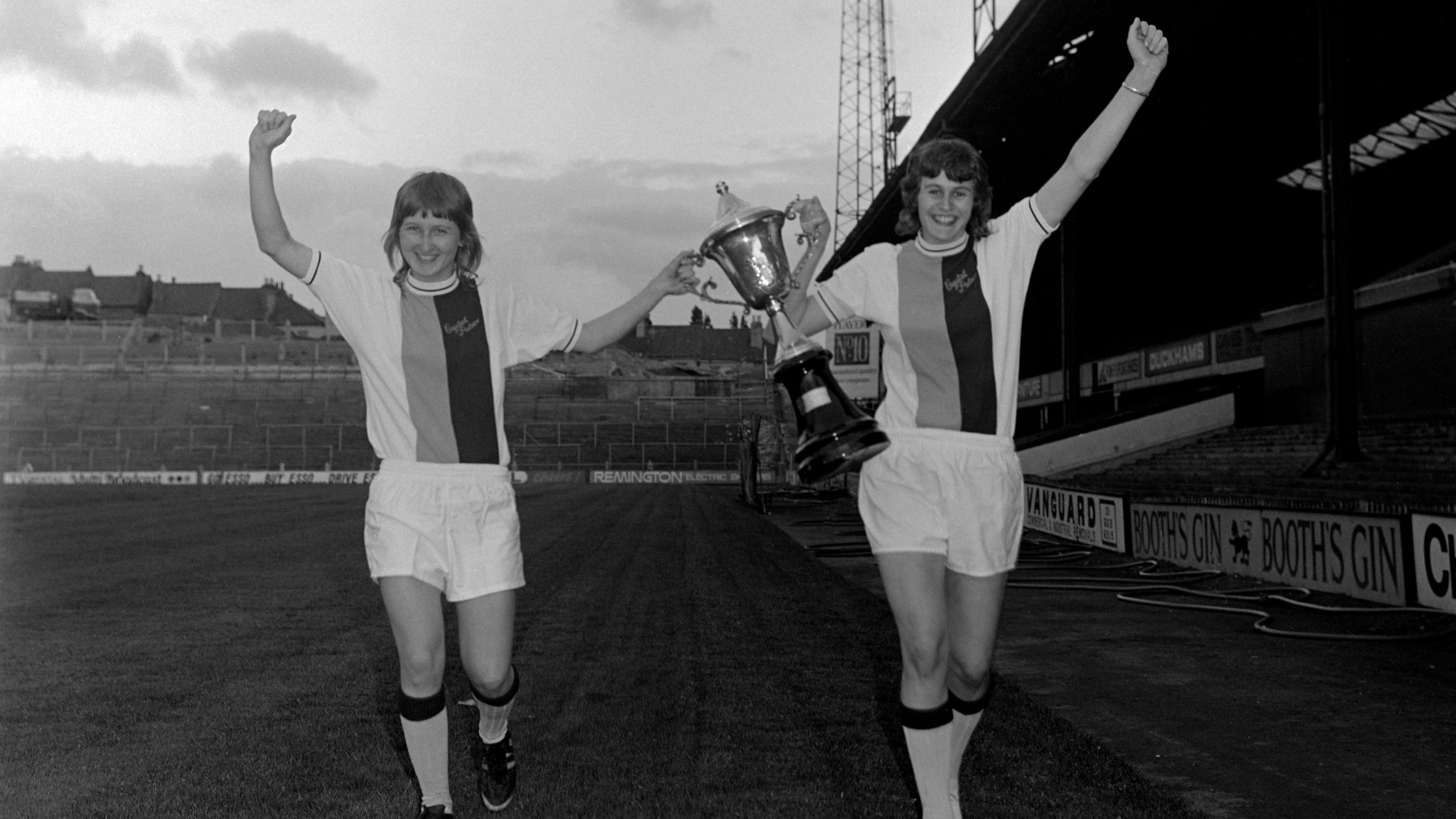
An 8-0 win over North Warnborough Belles saw Palace clinch the Women's Home Counties League title at the first attempt
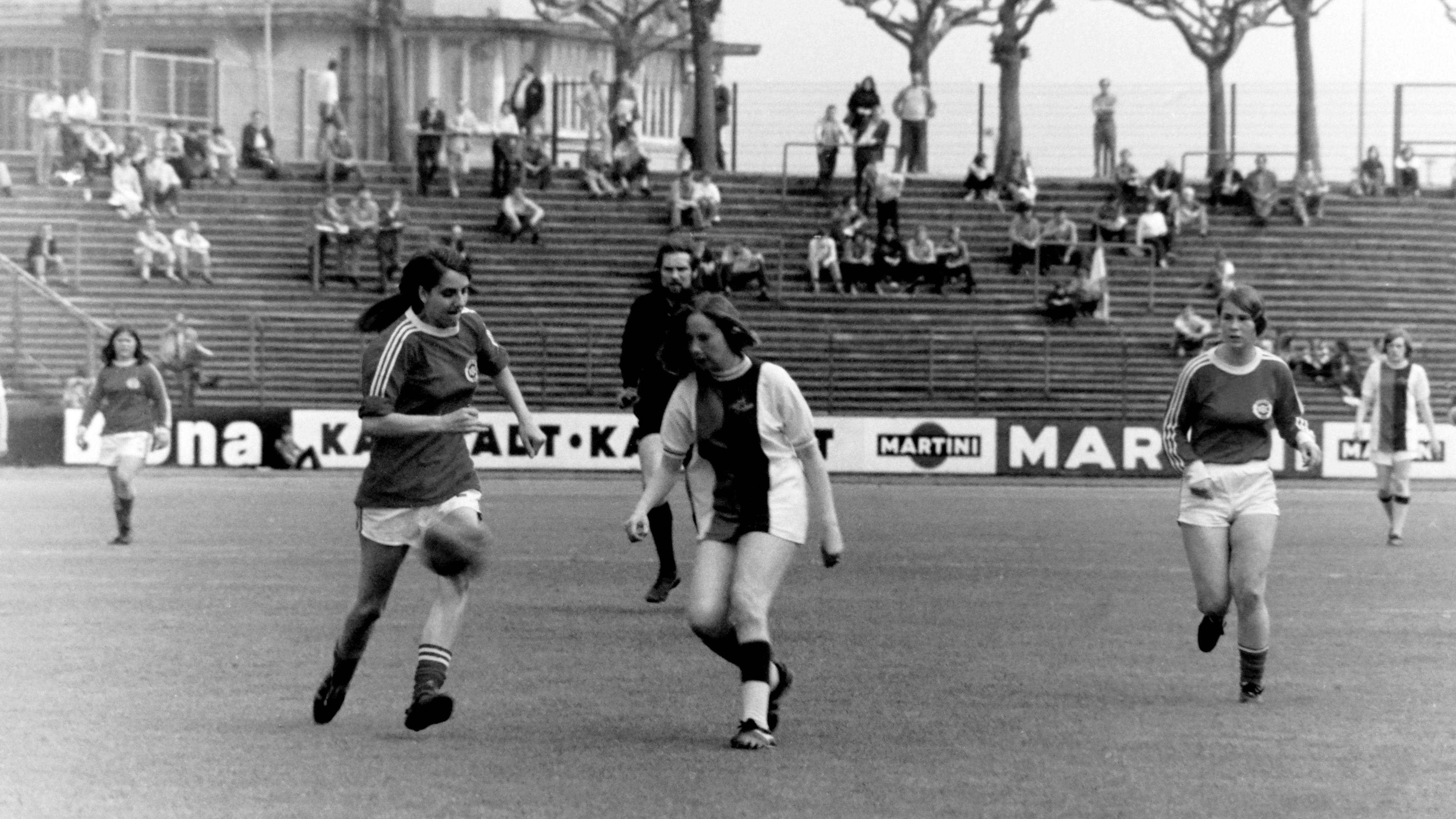
Hy Money's camera lens became a regular feature at Crystal Palace Ladies matches
Her first chance to photograph Crystal Palace men's team came from her own initiative.
“One of my sons wanted to see Crystal Palace play. We went to a game, and I immediately wanted to photograph a match,” she recalls.
After receiving no response to her requests for a photographer’s pass, she visited Selhurst Park and insisted on meeting manager Bert Head. Her persistence paid off when Head, albeit begrudgingly, granted her a pass.
However, her first visit to Wembley was met with resistance.
“As I got to the door, the chap there said, ‘over my dead body love. Is there nowhere sacred you women don’t want to stick your noses in?’,” she recalls.
Despite recognising some photographers in the queue, no one assisted her, forcing her to wait in her car throughout the match while her sons attended as fans.
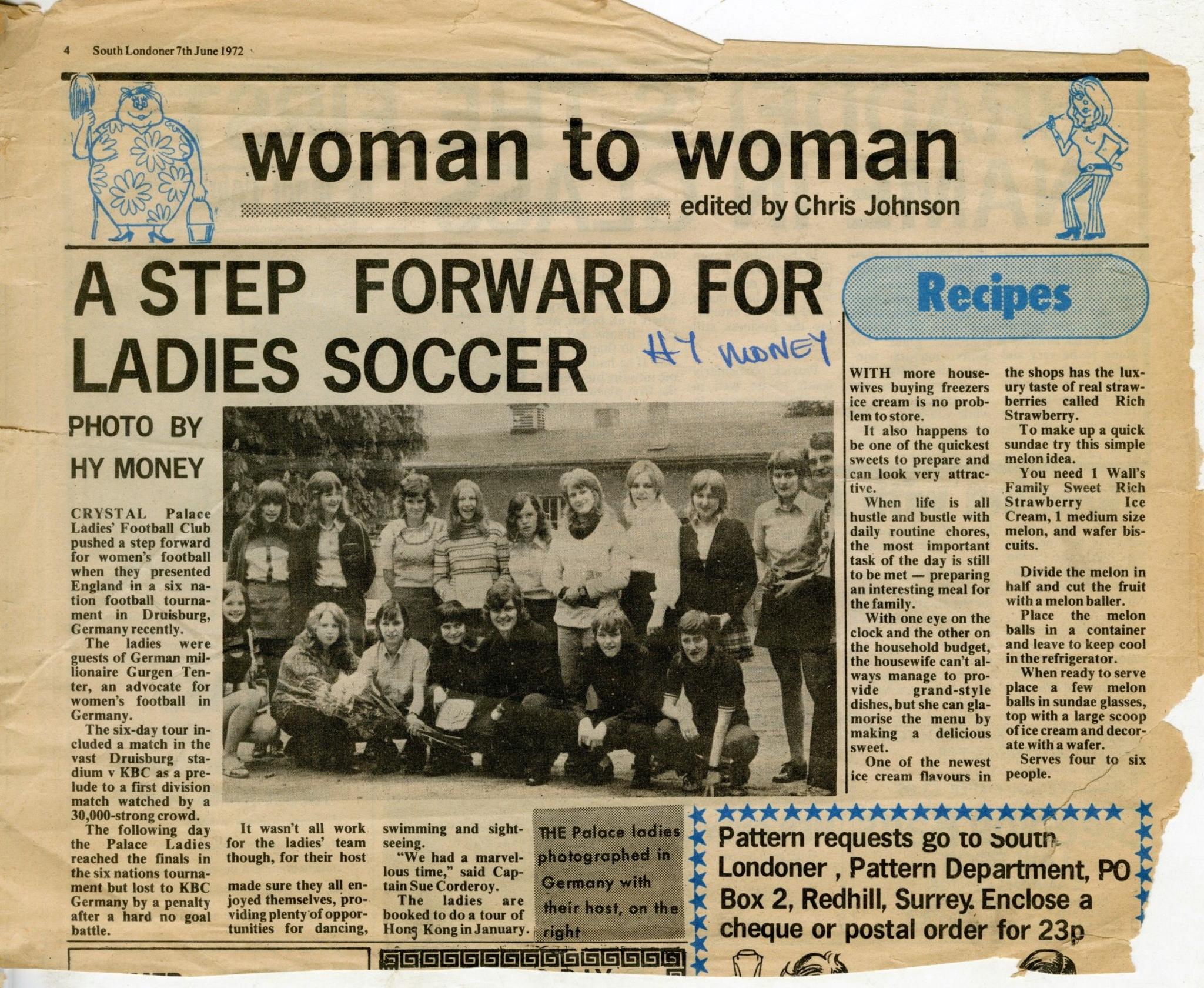
Crystal Palace Ladies FC, newspaper report (South Londoner on 7 June 1972) covering their May 1972 tour to Duisburg, Germany
Determined to continue, Ms Money challenged the NUJ’s decision to deny her accreditation, as "there’s no law against women taking sports photographs”.
She hired a solicitor, met all membership requirements, and ultimately became the first female NUJ sports photographer. Her work soon featured in the Crystal Palace programme, the Croydon Advertiser and The Evening Standard, among other publications.
The current incarnation of Crystal Palace Women (known as Crystal Palace Ladies until June 2019) were founded in 1992, but the history dates back much further.
When, in 1970, the FA lifted what had effectively been a 50-year ban on women playing, a host of teams sprung up with links of varying strength to top men’s clubs of the day – with Crystal Palace being among them.
As a freelance photographer, Ms Money has documented women playing under the Crystal Palace banner for more than half a century.
One of her earliest photos captures two players celebrating an 8-0 home win over North Warnborough Belles, clinching the Home Counties League title in the early 1970s.
“I used to photograph the ladies’ games on the most terrible pitches. Hackney Marshes could be brutal but better than some places. To see them playing here is wonderful,” Ms Money tells BBC London while capturing a recent training session at the club’s state-of-the-art Beckenham venue.
The £20m facility, opened three years ago, now houses both the men’s academy and the women’s first team.
'Paved the way'
In April, on a sunny afternoon at Selhurst Park, a goalless draw with Sunderland secured Crystal Palace Women’s promotion to England’s top division for the first time.
The team’s next home fixture is one of the biggest in their history with the Eagles taking on former Women's Super League (WSL) champions and current leaders Manchester City at Selhurst Park on 3 November.
“They are my extended family,” says Ms Money. “To see them playing in the WSL is like watching my children grow and flourish.”
During her latest visit, Ms Money focused her lens on head coach Laura Kaminski and captain Aimee Everett. Appointed in summer 2023, Kaminski led the team to promotion to the WSL in her first season, with Everett playing a pivotal role in midfield.
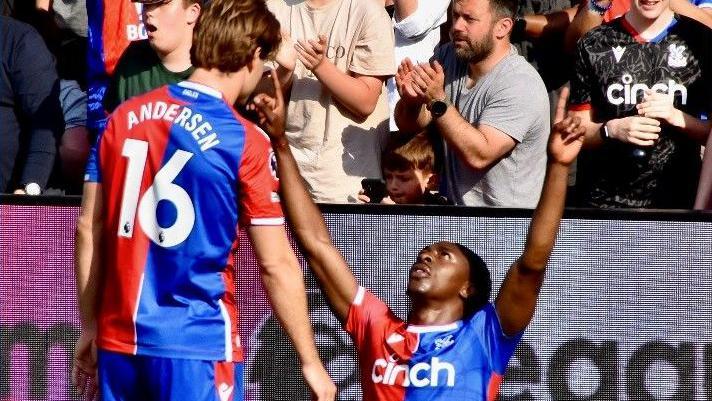
Ms Money continues to capture the highs and lows at Selhurst Park
Today, while salary disparities between women’s and men’s football persist, all first-team players in the WSL are professional.
“Everyone involved in women’s football understands the struggles of Hy’s generation and others who paved the way,” says Everett.
Kaminski also acknowledges Ms Money’s pioneering role.
“There are still battles to be fought and won in women’s football, but we’re in a much better place thanks to the likes of Hy.”
The walls of the Allison Suite at Selhurst Park - named after the charismatic manager from the 1970s and 1980s - are now adorned with her work.
“I’ve seen it all,” says Ms Money. “Promotions, relegations, play-offs, cup finals, great players like Ian Wright.”
'Long may it continue'
For much of the women’s team’s history, media attention was scarce, but Ms Money consistently kept them in her frame.
“Sports photography is sports photography,” she explains.
“I’m more invested in the visuals of the game than the emotions. It’s about the beauty of movement.
"I first saw that beauty photographing my young boys playing football in the garden, leaping through the air to catch or kick a ball. You see that in all football, men’s and women’s, at whatever level.”
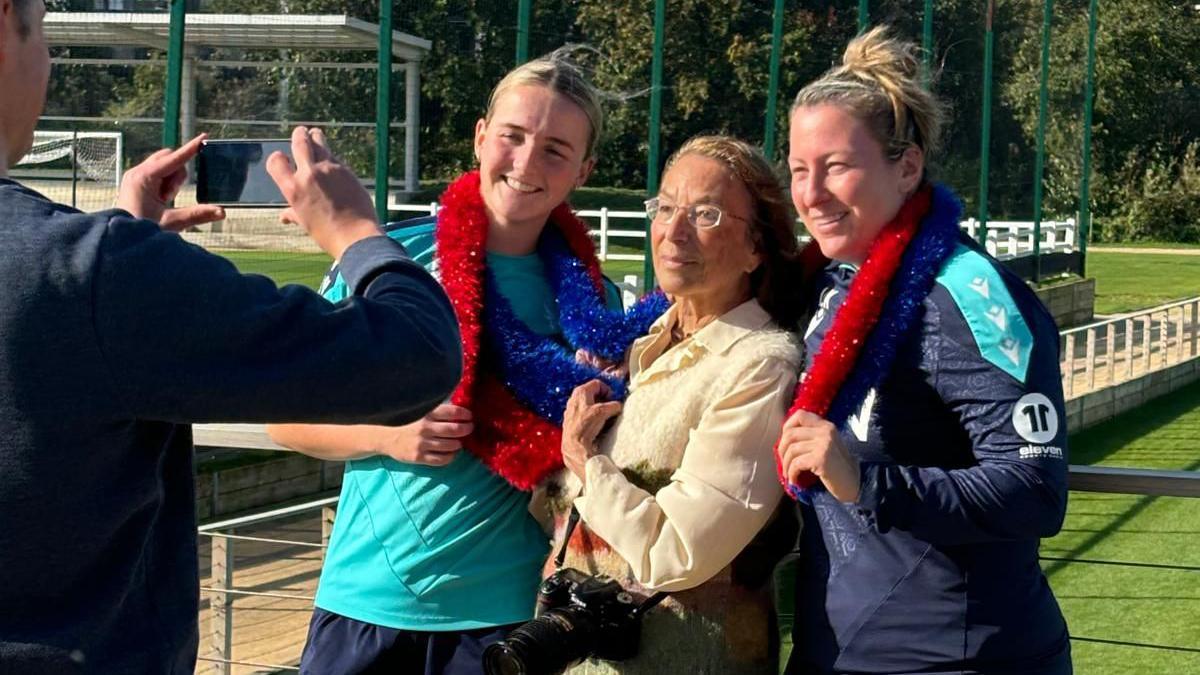
Ms Money says the Crystal Palace team are like "extended family"
Ms Money’s message to women aspiring to enter the male-dominated world of sports is clear: “Never give up.”
“If you feel that is what you want to do, give it a try,” she advises. “Just keep pursuing it because there is nobody who can say you cannot do that. Those days have gone; you can aspire to do anything now. I’ve proved that. Crystal Palace Women have proved that.
“Long may it continue.”
Listen to the best of BBC Radio London on Sounds and follow BBC London on Facebook, external, X, external and Instagram, external. Send your story ideas to hello.bbclondon@bbc.co.uk, external
Related topics
- Published18 August 2023

- Published1 August 2022
